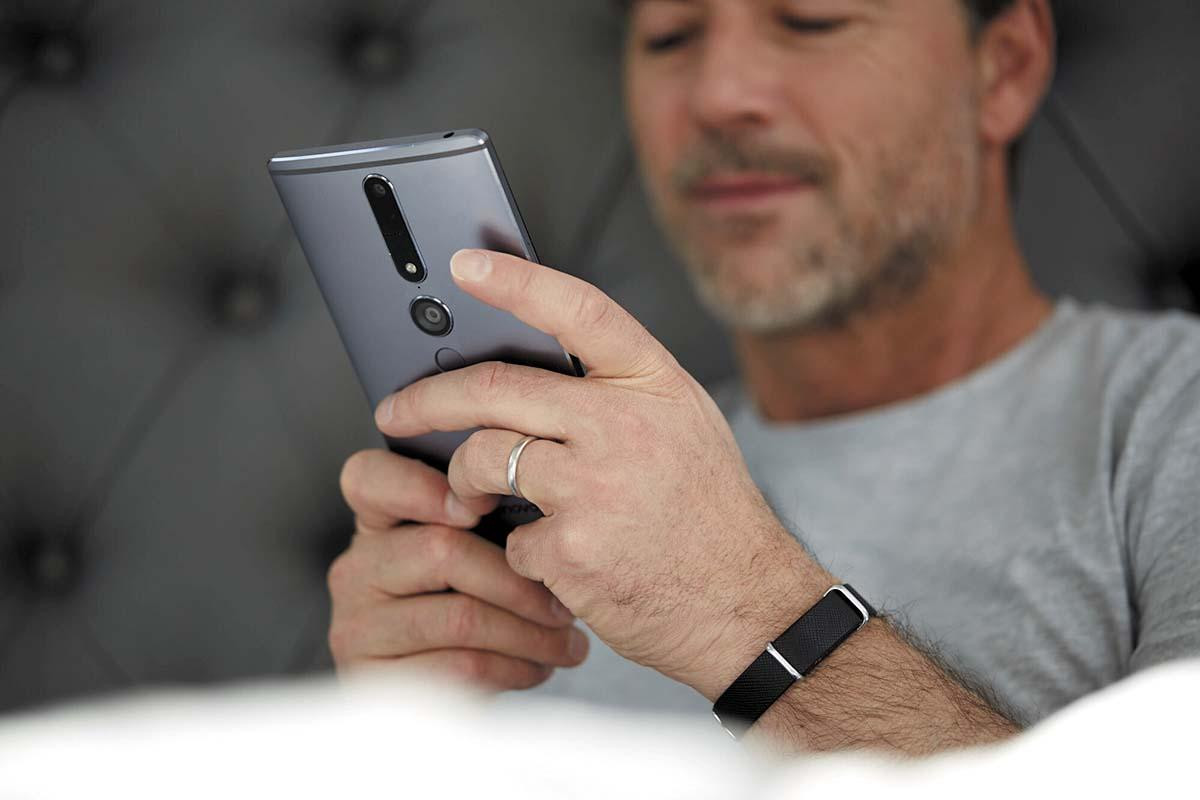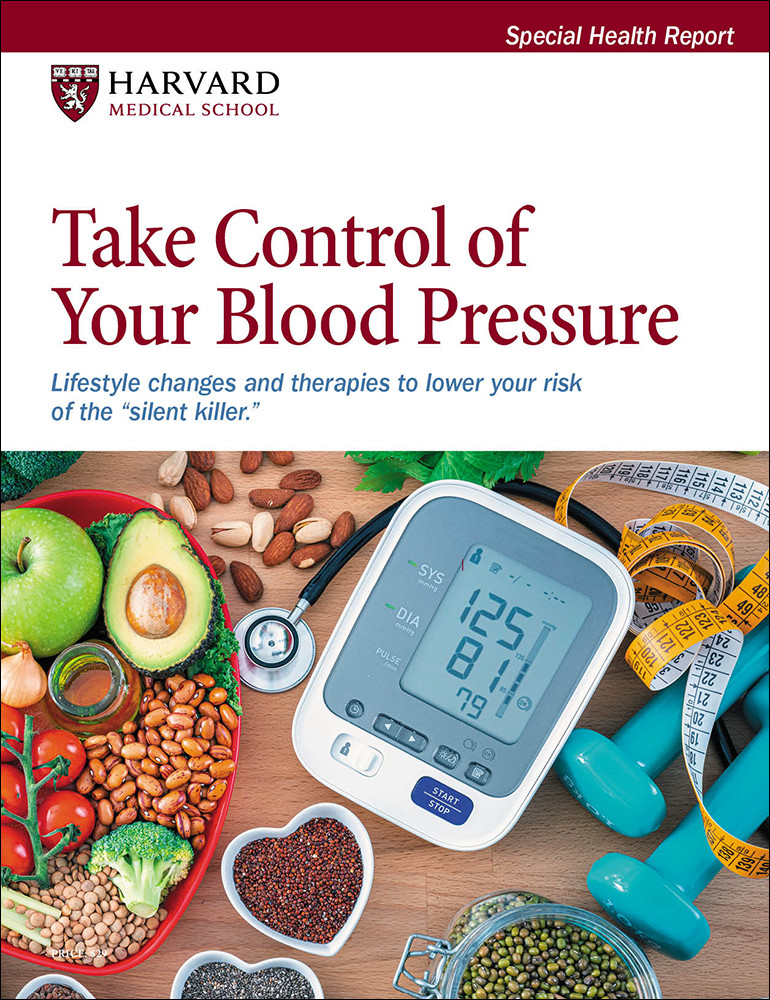The future of blood pressure monitoring: Cuffless devices
Checking your blood pressure may one day be much more convenient and comfortable. But hold on to your home blood pressure monitor for now.
- Reviewed by Christopher P. Cannon, MD, Editor in Chief, Harvard Heart Letter; Editorial Advisory Board Member, Harvard Health Publishing

In July, the FDA cleared the first over-the-counter cuffless blood pressure device — a slender wristband that automatically checks your blood pressure up to 50 times a day. Set to hit the market in 2026, the Hilo Band will cost about $280. The device relies on a light-based sensor to detect changes in the amount of blood flowing through the vessels of the inner wrist, a technique known as photoplethysmography (PPG).
A number of innovative approaches for measuring blood pressure using PPG and other technologies are in the works. They include devices such as rings, smartphones, smart glasses, chest patches, temporary tattoos — and even a toilet seat, according to a review in the June 1, 2025, issue of JAMA Cardiology. In fact, four other cuffless devices have already been cleared by the FDA for use in medical settings.
“Cuffless devices could potentially revolutionize the way blood pressure is monitored and managed. But we’re not quite there yet,” says Dr. Howard LeWine, an internist at Harvard-affiliated Brigham and Women’s Hospital and chief medical editor at Harvard Health Publishing. The main problem? There aren’t yet any standards to validate the accuracy of these devices, although official guidelines are under development.
The current reality: Not ideal
Although blood pressure is the most frequent measurement taken by health care providers, these occasional checks at the doctor’s office aren’t necessarily representative of your typical blood pressure. Blood pressure varies quite a bit throughout the day. And some people have what’s called white-coat hypertension, meaning their blood pressure rises in a medical setting, Dr. LeWine explains. That’s why guidelines recommend out-of-office blood pressure monitoring before starting or adjusting blood pressure drugs.
One way to do that is with ambulatory monitoring, which involves wearing a traditional blood pressure cuff on the upper arm for 24 hours. It automatically inflates every 20 to 30 minutes during the day and every 30 to 60 minutes during the night. But this option isn’t comfortable and often disrupts sleep. Few clinics even offer the service these days.
The other option, home-based monitoring, involves taking your blood pressure with your own machine, usually twice in the morning and twice in the evening, for one week. The duplicate readings should be done in succession and before taking any blood pressure drugs. “But sitting down to take your blood pressure a total of four times a day for a full week can be a burden. For a lot of people, it’s also anxiety-provoking,” says Dr. LeWine.
What’s more, people don’t always measure their blood pressure accurately, often because they use the wrong-sized cuff or they place their arm or the cuff in the wrong position (see “Monitoring your blood pressure at home? Make sure you follow these steps” in the August 2023 Heart Letter). One recent study found that 60% of people made three or more errors while taking their blood pressure at home.
Cuffless convenience
In contrast, easy-to-use cuffless devices unobtrusively measure blood pressure throughout the day and night. There’s no squeezing sensation, and it doesn’t make the sound of an inflatable cuff, either of which may (in some people) trigger an alarm reaction that causes blood pressure to climb. With the Hilo Band, the green light that shines on the inside of the wrist isn’t visible to the wearer.
But as the JAMA Cardiology review notes, cuffless devices have some problems. Because they measure blood pressure not just when people are sitting still but also when they’re standing, moving, and lying down, validating the accuracy of the readings is far more complicated. All of the five currently available devices have to be periodically calibrated against a traditional cuff-based device. For users of the Hilo Band and any future over-the-counter products, this calibration step may be challenging, especially for older people.
In addition, cuffless devices create substantial amounts of data, which have to be securely transmitted, stored, and analyzed. That creates potential issues related to technological compatibility, clinician workload, and privacy. Finally, there aren’t yet any clinical trials showing that cuffless devices are just as effective and cost-efficient for preventing heart-related problems as traditional devices are.
In coming years, cuffless devices will be commonplace and likely beneficial for everyone, says Dr. LeWine. “For now, they could be particularly helpful for people who have recurrent spells of feeling lightheaded, as the immediate feedback about their blood pressure could help inform medication adjustments,” he says.
This article is brought to you by HarvardHealthOnline+, the trusted subscription service from Harvard Medical School. Subscribers enjoy unlimited access to our entire website, including exclusive content, tools, and features available only to members. If you're already a subscriber, you can access your library here.
Photo courtesy of Aktiia
About the Author

Julie Corliss, Executive Editor, Harvard Heart Letter
About the Reviewer

Christopher P. Cannon, MD, Editor in Chief, Harvard Heart Letter; Editorial Advisory Board Member, Harvard Health Publishing
Disclaimer:
As a service to our readers, Harvard Health Publishing provides access to our library of archived content. Please note the date of last review or update on all articles.
No content on this site, regardless of date, should ever be used as a substitute for direct medical advice from your doctor or other qualified clinician.
















